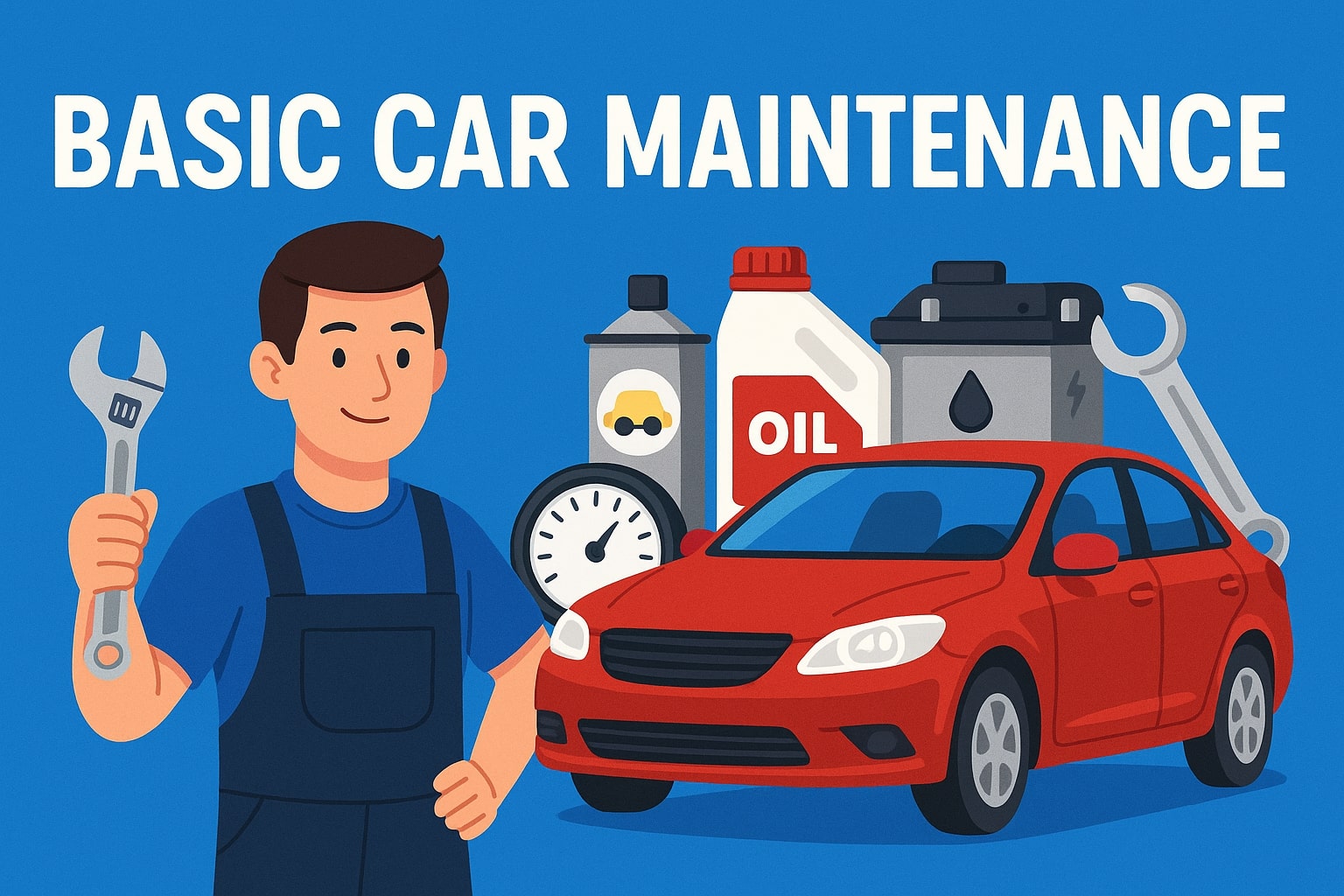What Are the Most Important Basic Car Maintenance Tasks?
Essential basic car maintenance starts with regular fluid checks and changes. Monitor your engine oil level monthly and change it according to your manufacturer's schedule - typically every 3,000-7,500 miles depending on your car and oil type. Check coolant, brake fluid, power steering fluid, and windshield washer fluid regularly. Low fluid levels can lead to expensive engine damage or safety issues.
Tire maintenance is equally crucial for safety and cost savings. Check tire pressure monthly using a simple gauge - properly inflated tires improve fuel economy and last longer. Inspect tire tread depth using the penny test, and rotate tires every 5,000-8,000 miles for even wear. Replace air filters every 12,000-15,000 miles to maintain engine efficiency and performance.
📺 Featured Video

This video can save you $3,000 in car maintenance costs #automobile #carsafety #skills #tips #car
by chequanxiaoqiao
Basic Car Maintenance Checklist
Monthly Checks
- Check Oil Level: Use dipstick to ensure oil is between min and max marks
- Inspect Tire Pressure: Check all tires including spare (check door jamb for PSI)
- Test All Lights: Headlights, brake lights, turn signals, and hazards
- Windshield Washer Fluid: Top up if needed
- Look for Leaks: Check under the car for any fluid spots
Every 3 Months
- Battery Check: Look for corrosion on terminals and ensure secure connection
- Windshield Wipers: Replace if streaking or not clearing properly
- Air Filter Inspection: Replace if dirty (hold up to light - if you can't see through it, replace it)
- Coolant Level: Check when engine is cold, should be between min and max
Every 6 Months
- Tire Rotation: Move tires to different positions for even wear
- Brake Inspection: Check pad thickness and listen for squealing
- Transmission Fluid: Check level and color (should be red/pink, not brown)
- Power Steering Fluid: Check level and top up if needed
- Exhaust System: Look for rust, damage, or loose parts
Annual Maintenance
- Oil and Filter Change: Follow manufacturer's recommendations (usually every 5,000-7,500 miles)
- Spark Plugs: Replace according to manual (usually 30,000-100,000 miles)
- Cabin Air Filter: Replace for better air quality
- Brake Fluid: Check level and color (should be clear/amber, not dark)
- Coolant Flush: Replace coolant every 2-5 years
- Belt Inspection: Check serpentine belt for cracks or wear
Warning Signs to Never Ignore
- Check Engine Light: Get diagnostic scan immediately
- Temperature Gauge High: Pull over safely and let engine cool
- Oil Pressure Light: Stop driving immediately
- Unusual Noises: Grinding, squealing, or knocking sounds
- Vibrations: Especially when braking or at certain speeds
- Fluid Leaks: Identify color and location of leak
Essential Tools for DIY Maintenance
- Basic Tool Set: Wrenches, screwdrivers, pliers
- Jack and Jack Stands: For safe tire changes
- Tire Pressure Gauge: Digital or analog
- Oil Filter Wrench: For oil changes
- Multimeter: For electrical testing
- Funnel Set: For adding fluids
- Work Gloves: Protect your hands
- Flashlight: For inspecting dark areas
How Can You Avoid Expensive Mechanic Bills?
Many basic car maintenance tasks that mechanics charge premium prices for are actually simple DIY jobs. Replacing cabin air filters, changing windshield wipers, and checking battery terminals are straightforward tasks that require minimal tools. Learning to diagnose common issues like unusual noises, warning lights, or performance changes helps you address problems early before they become expensive repairs.
Preventive maintenance is your best defense against costly repairs. Keep detailed records of maintenance performed and follow your owner's manual schedule. Regular washing and waxing protects your car's exterior, while cleaning the interior prevents wear and maintains resale value. Address small issues promptly - a $20 belt replacement is much cheaper than the engine damage that results from a broken belt.
📺 Featured Video

11 Car Repair Secrets That Will Save You $2720 Every Year
by Car Care Clues
What Tools and Supplies Do You Need for Basic Car Maintenance?
Building a basic car maintenance toolkit doesn't require expensive equipment. Essential items include a tire pressure gauge, basic wrenches and screwdrivers, jumper cables, and a flashlight. Keep spare fluids like engine oil, coolant, and windshield washer fluid in your garage. A simple code reader can help diagnose check engine lights and save diagnostic fees.
Invest in quality basics rather than cheap tools that break easily. A good jack and jack stands are essential for safe tire changes and under-car inspections. Work gloves, shop rags, and safety glasses protect you during maintenance tasks. Many auto parts stores offer tool lending programs for specialized equipment you might need occasionally, making basic car maintenance more accessible and affordable.
📺 Featured Video

13 Car Maintenance Tips MECHANICS Don't Want YOU to Know
by Car Care Clues
